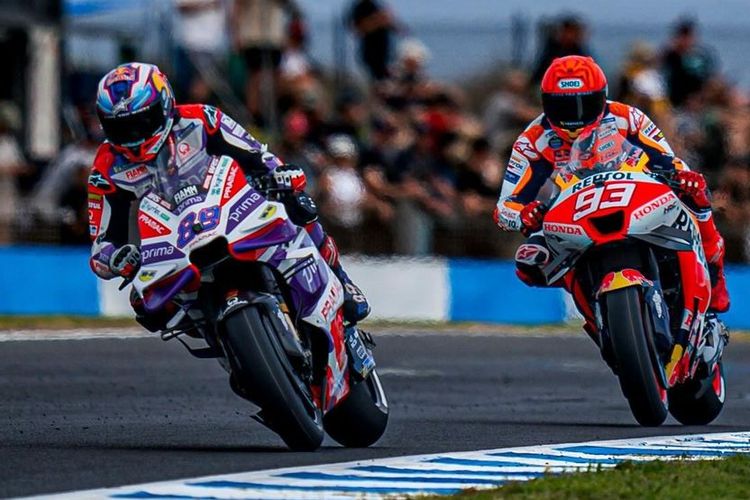The Hells Angels: A Deeper Look Into Their History And Culture

Table of Contents
The Origins and Early Years of the Hells Angels
Post-WWII Context and the Founding
The formation of the Hells Angels Motorcycle Club (HAMC) in 1948 was deeply rooted in the post-World War II social climate. Returning veterans, often disillusioned and restless, sought camaraderie and a sense of belonging. This environment fostered the rise of motorcycle clubs, with the Hells Angels emerging as one of the most prominent. The club's founding in San Bernardino, California, reflected the burgeoning biker culture concentrated in the American West. Early Hells Angels were predominantly white, working-class men, drawn together by a shared love of motorcycles and a rejection of mainstream society.
- Location of founding: San Bernardino, California
- Initial membership demographics: Primarily white, working-class veterans
- Early club activities: Motorcycle riding, socializing, and establishing a distinct identity
The early Hells Angels origins are marked by a loose organizational structure and a focus on camaraderie and riding. However, even in these early years, the seeds of future conflicts and criminal activity were sown.
Early Club Structure and Activities
The initial Hells Angels structure was informal, with a loose hierarchy and a focus on shared experiences. Early club patches and insignia began to solidify their identity, setting them apart from other motorcycle clubs. However, early interactions with law enforcement were often characterized by clashes, highlighting the club's growing defiance of authority. This early Hells Angels history is punctuated by increasing tensions and sporadic conflicts with rival motorcycle clubs, laying the groundwork for future large-scale disputes.
- Early club patches and insignia: The iconic Death Head became increasingly prominent.
- Early conflicts with rival motorcycle clubs: Minor clashes and territorial disputes became more frequent.
- Early criminal activities: While not yet organized crime, petty theft and violence were common.
The Hells Angels activities in their early years laid the foundation for the club’s future trajectory, showcasing a blend of camaraderie and a disregard for established norms and laws.
The Hells Angels' Expansion and Territorial Conflicts
Growth and Chapter Expansion
From their humble beginnings in San Bernardino, the Hells Angels experienced significant expansion across the United States and internationally. The establishment of charters in major cities like Oakland and San Francisco solidified their presence in California, while further expansion led to chapters across the country and even overseas. This Hells Angels expansion was a deliberate strategy, increasing their reach and influence.
- Key dates of expansion: The 1950s and 1960s saw rapid growth.
- Significant chapters: Oakland, San Francisco, and numerous other major U.S. and international cities.
- International chapters: The club established a presence in several countries worldwide.
The international Hells Angels presence further solidified their image as a global force, and a significant player in the organized crime world.
Rivalries and Violence
The Hells Angels' expansion inevitably led to conflicts with other motorcycle clubs, most notably the Bandidos and the Mongols. These rivalries frequently escalated into violent confrontations and turf wars, often involving weapons and resulting in injuries and deaths. Law enforcement agencies struggled to contain the escalating violence, further cementing the Hells Angels reputation for brutality.
- Notable conflicts with rival clubs: The clashes with the Bandidos and Mongols are particularly well-documented.
- Major incidents of violence: Numerous large-scale brawls and retaliatory attacks marked the club's history.
- Law enforcement responses: Law enforcement agencies often found themselves struggling to maintain order and control.
The Hells Angels violence and their involvement in organized crime earned them a reputation as one of the most dangerous motorcycle clubs worldwide.
Hells Angels Culture and Symbolism
The Iconic Imagery and Symbolism
The Hells Angels’ use of imagery and symbolism is integral to their identity and culture. The iconic Death Head, for example, represents defiance, rebellion, and a rejection of societal norms. The colors and patches worn by members further emphasize their belonging and status within the club. The evolution of these Hells Angels symbols over time reflects the club’s shifting priorities and internal dynamics.
- Meaning of the Death Head emblem: A symbol of death, rebellion, and defiance.
- Significance of colors and patches: Distinctive markings denote membership and rank.
- Evolution of club insignia: Slight modifications over time reflect changing internal dynamics.
The Hells Angels symbolism is a powerful tool in projecting their image, a carefully cultivated brand of rebellion and menace.
The Hells Angels' Lifestyle and Values (or lack thereof)
The Hells Angels lifestyle is often characterized by a strong sense of brotherhood and loyalty among members. This loyalty, however, exists within a culture of rebellion and often lawless behavior. The club's internal structure features a hierarchy with strict codes of conduct, although the adherence to these codes can be inconsistent. The complexities and contradictions within the group represent a significant challenge in understanding their culture.
- Brotherhood: Strong bonds of loyalty among members are a core aspect of the club's culture.
- Loyalty: Members are expected to show unwavering loyalty to the club and its leadership.
- Rebellion: Rejection of mainstream society is a central theme in Hells Angels culture.
- Outlaw biker culture: The club embraces the outlaw biker identity.
- Internal hierarchies and structure: A hierarchical structure exists within the club, defining roles and responsibilities.
The Hells Angels values, or lack thereof, represent a complex and often contradictory aspect of the club's identity.
The Hells Angels and the Law
Criminal Activities and Law Enforcement Scrutiny
The HAMC has a long and well-documented history of involvement in various criminal activities, including drug trafficking, extortion, and violence. Law enforcement agencies worldwide have devoted significant resources to investigating and prosecuting members, facing challenges due to the club's tight-knit structure and their use of violence to protect themselves. These Hells Angels investigations have often resulted in numerous arrests and convictions but have also faced obstacles in dismantling the organization effectively.
- Notable criminal investigations: Several large-scale investigations have targeted the club's criminal activities.
- Major arrests and convictions: Numerous members have been arrested and convicted of various crimes.
- Ongoing law enforcement challenges: Disrupting the club’s operations remains a persistent challenge.
The Hells Angels criminal activity represents a major aspect of the club's ongoing conflict with law enforcement.
Legal Battles and Court Cases
The Hells Angels have been involved in numerous legal battles throughout their history. Landmark court cases have focused on issues ranging from racketeering and drug trafficking to suppression of evidence. These Hells Angels legal battles highlight the ongoing conflict between the club and law enforcement, constantly seeking to challenge and disrupt the club's operations. The outcomes of these legal challenges have had a significant impact on the club’s activities and strategic operations.
- Key legal cases: Several high-profile cases have tested the limits of law enforcement's power.
- Outcomes of legal challenges: Some cases have resulted in significant convictions, while others have been less successful.
- Impact on club activities: Legal battles have forced the club to adapt its strategies and operations.
The Hells Angels legal challenges show their enduring battle against law enforcement efforts to curtail their activities.
Conclusion
Understanding the Hells Angels requires a nuanced approach, acknowledging both their notorious history and the complex cultural significance they embody. Their impact on popular culture is undeniable, and their presence continues to be felt across the globe. From their post-war origins to their ongoing conflicts with law enforcement, the Hells Angels represent a fascinating and disturbing case study in outlaw biker culture and organized crime. Continue exploring the world of the Hells Angels through further research and documentary resources to gain a more complete understanding of this enigmatic motorcycle club.

Featured Posts
-
 Siaran Langsung Moto Gp Inggris Race Sprint Pukul 20 00 Wib Link Live Streaming
May 26, 2025
Siaran Langsung Moto Gp Inggris Race Sprint Pukul 20 00 Wib Link Live Streaming
May 26, 2025 -
 From 0 6 To Semifinal Swiateks Resilience Shines In Madrid Open
May 26, 2025
From 0 6 To Semifinal Swiateks Resilience Shines In Madrid Open
May 26, 2025 -
 New York Rangers Coaching Change Laviolettes Dismissal And The Road Ahead
May 26, 2025
New York Rangers Coaching Change Laviolettes Dismissal And The Road Ahead
May 26, 2025 -
 Atletico Madrid Barcelona Maci Canli Skor Ve Detayli Analiz Fanatik
May 26, 2025
Atletico Madrid Barcelona Maci Canli Skor Ve Detayli Analiz Fanatik
May 26, 2025 -
 Gerard Butler And The Nepotism Debate A New Actresss Rise
May 26, 2025
Gerard Butler And The Nepotism Debate A New Actresss Rise
May 26, 2025
Latest Posts
-
 Comparatif Prix Samsung Galaxy S25 256 Go Le Meilleur Bon Plan A 699 90 E
May 28, 2025
Comparatif Prix Samsung Galaxy S25 256 Go Le Meilleur Bon Plan A 699 90 E
May 28, 2025 -
 Acheter Le Samsung Galaxy S25 256 Go Bon Plan A 699 90 E
May 28, 2025
Acheter Le Samsung Galaxy S25 256 Go Bon Plan A 699 90 E
May 28, 2025 -
 Bon Plan Smartphone Samsung Galaxy S25 256 Go 5 Etoiles 699 90 E
May 28, 2025
Bon Plan Smartphone Samsung Galaxy S25 256 Go 5 Etoiles 699 90 E
May 28, 2025 -
 Offre Exceptionnelle Smartphone Samsung Galaxy S25 256 Go A 699 90 E
May 28, 2025
Offre Exceptionnelle Smartphone Samsung Galaxy S25 256 Go A 699 90 E
May 28, 2025 -
 Comparatif Samsung Galaxy S25 Ultra 256 Go Face A La Competition
May 28, 2025
Comparatif Samsung Galaxy S25 Ultra 256 Go Face A La Competition
May 28, 2025
